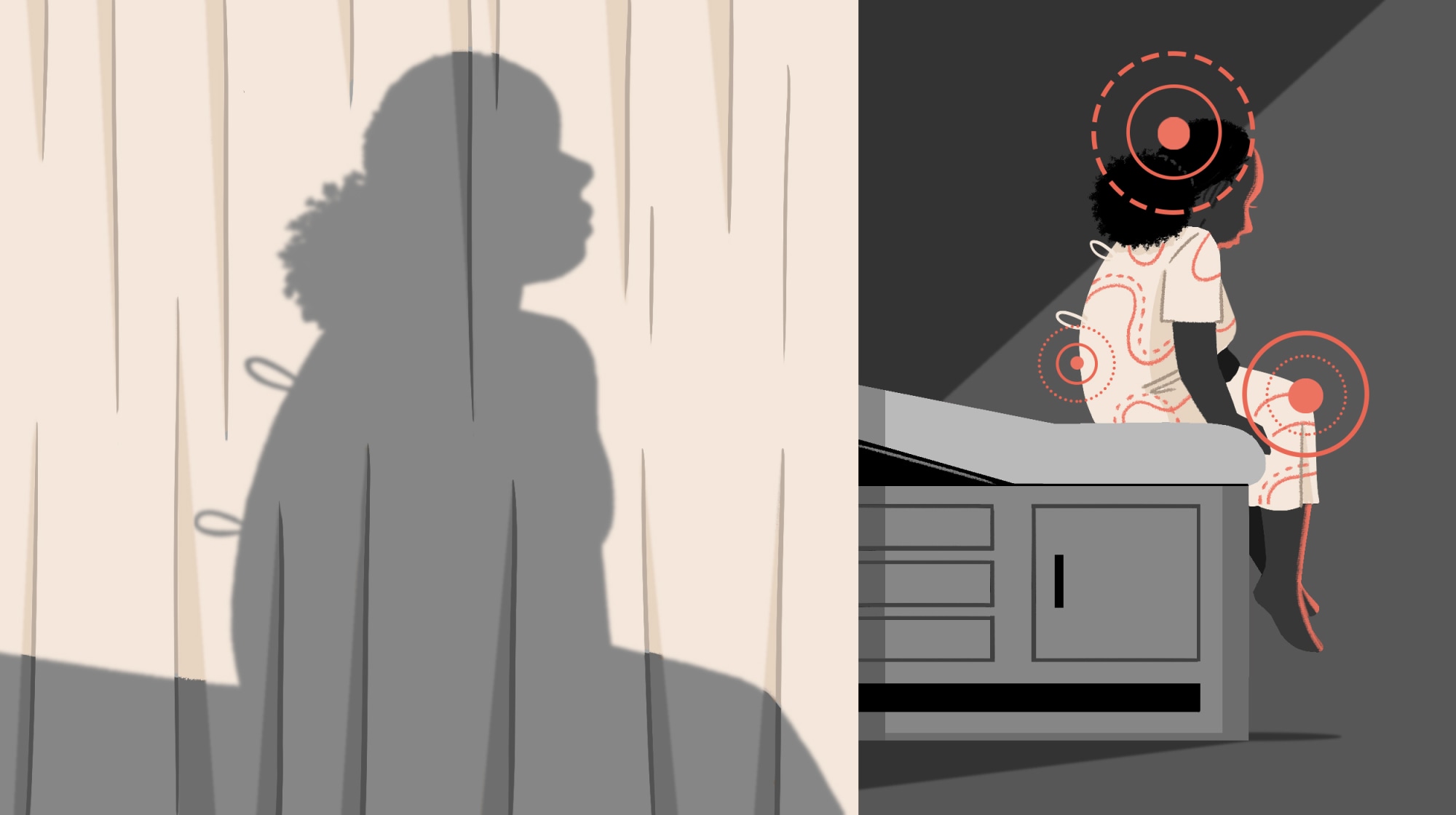
In my white and lavender slippers that are just one size too small, I shuffle shakily towards the wheelchair being rolled in my direction. Just a few difficult steps and my tiny, hundred- and thirty-pound frame collapses heavily into the medical chair. The whole time, I am doubled over at the waist, clutching the same solid-gray hospital waste bucket that they had given me on my discharge just yesterday. I cannot even look up as a temperature gauge scans me for fever to enact proper COVID-19 protocols. After the quick scan, I’m rolled, achingly slowly, over to the triage nurse that instantly addresses me by name. I am impressed that they know me so well through my frequency of visits. The nurse asks me standard questions, like what my symptoms were, how long they’ve persisted, and my medical history; all a very slow, painful recounting of the morning’s events. I woke up. I felt pain. And now I am here, simple as that. With registration complete they wheel me over to get some vitals done, my head practically buried in my waste bucket the whole time. I can barely croak out measly responses to their rapid questions. This whole introductory protocol takes about fifteen minutes of sharp, pulsing agony before I am finally wheeled back into a hospital room. My fiancé, having stood sentry and assisted in my care the whole time, helps me climb into the uncomfortable little hospital bed and change into a gown. From there, the second longest wait in this process begins, the wait to actually be seen by a medical professional; the first being the hours spent in sheer pain trying to convince myself not to go to the hospital because of expense and previous gaslighting of my symptoms. It can take minutes, it can take hours, but either way I lay there in the fetal position begging for some semblance of peace in the near future.
I think it was probably the umpteenth time of being stuck with a needle that I finally stopped responding to the pinch entirely. It was incomparable to the hot pain snaking through my abdomen at the moment. After waiting what feels like decades for a doctor to appear, there are a few medical interventions that can or cannot be enacted dictated solely by the doctor’s bias. The most common line I hear in the ER is, “We will not be prescribing you any narcotics”, as they claim it will do more damage than this frequent, intense, vomit-inducing pain will. An ignorant and empty observation from my perspective, as I know that I have far more knowledge from my direct experiences of living with this ailment than this half-empty opinion based in historic racial discrimination.
Black patients receive pain medication nearly half as often as their white counterparts. This is exactly the situation presented to me as I have been told directly that it is their personal bias dictating this decision and have even brought it up myself; which ends up with the doctor shutting down any further conversation with the frustration almost akin to a child’s fit. I am hurting. I am in pain. I need a serious medication to stop that yet next door I can hear a man getting prescribed four milligrams of morphine for his inexplicable “back pain”. And yes, before you ask, he was an older gentleman of white complexion. For what I have to fight for, they are given so liberally without argument. The result of such medical ignorance is me, a scrawny twenty-one-year-old, writhing in agony for hours with no true medical aid. I tell them which medicines do nothing; they administer them anyway. I tell them what actually works, they just turn away. I am entirely powerless here and all I beg for, with every aching minute, is for someone to open their heart and help me. It hurts and I am hurt, and the American healthcare system continues to fail and ignore me.
(Image Credit: Shannon Wright / Today)